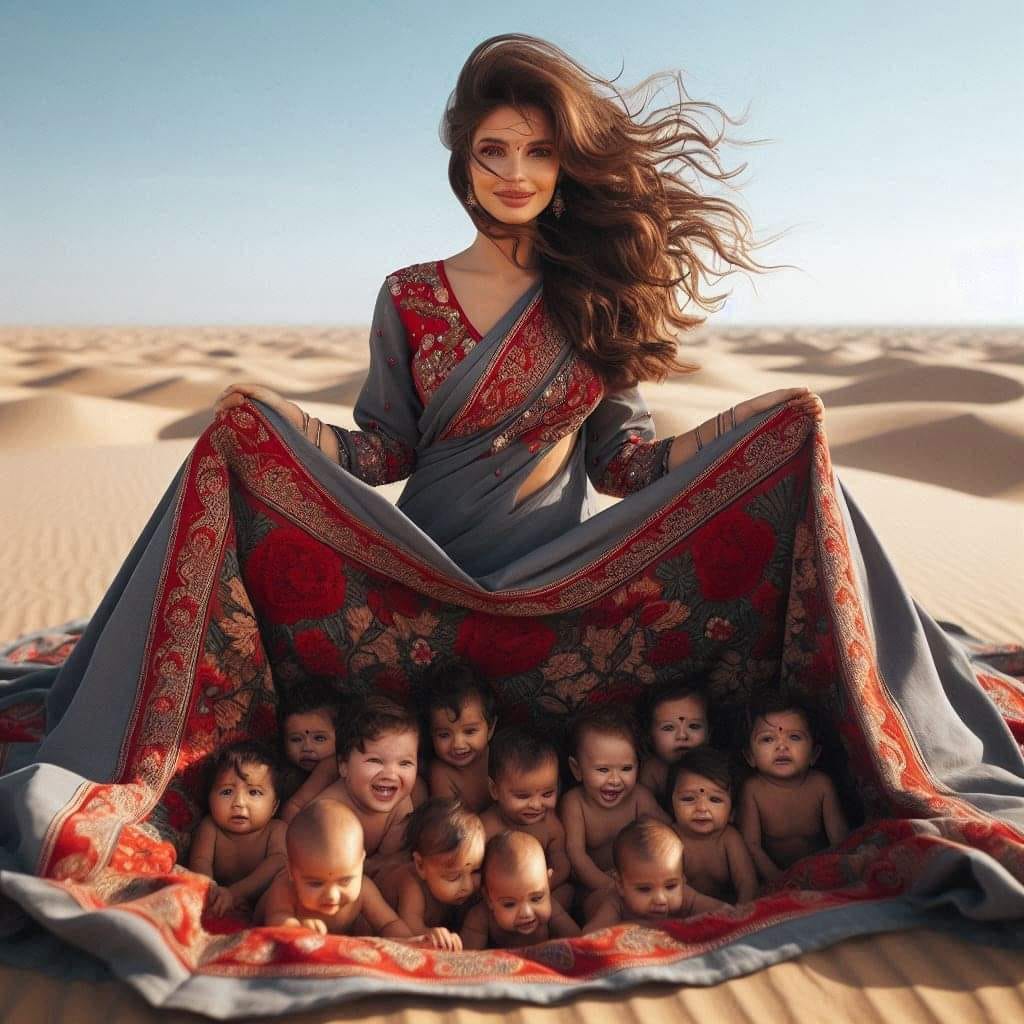In the heart of an expansive desert, where the golden dunes stretch as far as the eye can see, a remarkable and heartwarming scene unfolds. At the center of this tranquil and otherworldly landscape sits a woman of ethereal beauty, adorned in a resplendent saree that combines shades of deep blue and vibrant red. Her attire is richly embroidered with intricate floral patterns, reminiscent of the lushness and life that often contrasts with the arid environment around her.
The woman’s long, flowing hair dances gracefully in the gentle desert breeze, and her serene smile exudes warmth and love. She exudes an aura of nurturing and maternal grace, her presence as comforting and inviting as an oasis in the desert. However, it is not merely her beauty and poise that captivate the viewer but the unexpected and delightful treasure that she holds within the folds of her saree.
Nestled safely under the protective embrace of her saree are numerous cherubic babies, each radiating joy and innocence. These infants, with their round cheeks and sparkling eyes, are the epitome of happiness and new life. They seem to be laughing, gurgling, and exploring their surroundings with an insatiable curiosity, their tiny hands reaching out to touch and discover the world around them. Their expressions are a mixture of wonder and contentment, as if they are fully aware of the love and protection enveloping them.
The image of the woman and her precious cargo of babies presents a powerful metaphor for fertility, life, and the nurturing spirit of motherhood. Despite the harshness of the desert, this scene symbolizes hope and the miracle of new beginnings. The desert, often ᴀssociated with barrenness and solitude, is transformed into a cradle of life and joy by the presence of the woman and the babies.

The saree, with its vibrant colors and rich textures, serves as a protective canopy, much like a mother’s embrace, shielding the babies from the harsh elements. It represents the shelter and security that a mother provides, a place where life can flourish even in the most challenging conditions. The juxtaposition of the delicate, tender infants against the vast, unforgiving desert landscape highlights the resilience and beauty of life itself.
Moreover, this scene evokes a sense of timelessness and universality. It transcends cultural and geographical boundaries, portraying a universal theme of motherhood and the continuity of life. The desert, an ancient and enduring part of the earth, becomes a symbol of the eternal cycle of life, birth, and renewal.
In conclusion, this poignant and evocative image captures the essence of maternal love and the miracle of life in a setting that is both stark and breathtakingly beautiful. The woman, with her serene grace and the joyous babies sheltered within her saree, embodies the strength, resilience, and nurturing spirit that bring new life into the world. This scene serves as a powerful reminder that even in the most unexpected places, life finds a way to blossom and thrive, guided by the unwavering love and protection of a mother’s embrace.




